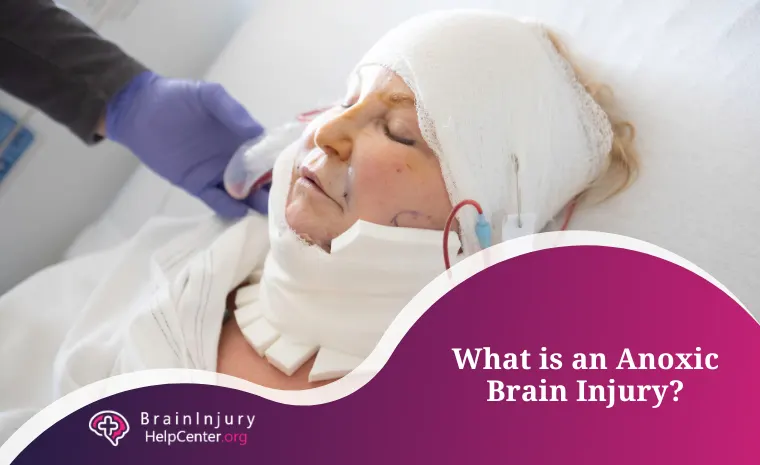Anoxic brain injuries result from the deprivation of oxygen to the brain, leading to a cascade of physiological events with profound and often irreversible consequences. Regardless of the cause—be it medical malpractice, accidents, or near-drowning incidents—the impact on an individual’s life can be devastating, affecting cognitive function, motor skills, and quality of life.
This comprehensive exploration delves into the fundamentals of anoxic brain injuries, their causes, symptoms, and the recommended course of action post-incident, emphasizing the importance of legal counsel in seeking justice and compensation.
What is an Anoxic Brain Injury?
An anoxic brain injury occurs when the brain has a complete lack of oxygen, causing brain cell damage and, in severe cases, irreversible neurological impairment. This lack of oxygen, known as hypoxia, can result from various factors such as drowning, cardiac arrest, suffocation, or trauma sustained in incidents like car accidents. The consequences impact cognitive function, motor skills, cause brain swelling and overall affect quality of life of the victim.
Common Causes of Anoxic Brain Injuries
Understanding the causes and manifestations of cerebral anoxia empowers individuals to take preventive measures and seek timely medical intervention in high-risk scenarios:
- Drowning: Submersion in water can lead to oxygen deprivation, causing anoxic brain injuries.
- Cardiac Arrest: During a heart attack, inadequate blood flow to the brain can result in severe damage.
- Suffocation: Oxygen supply cut-off, as in choking or exposure to toxic gases, can lead to anoxic brain injuries.
- Traumatic Events: Car accidents causing direct head impact can contribute to anoxic brain injuries, emphasizing the importance of legal support for compensation and justice.
Signs and Symptoms of Anoxic Brain Injury
Recognizing these traumatic brain injuries’ signs and symptoms is crucial for prompt intervention. If you find yourself suspecting a case of anoxic injury, look for:
- Cognitive Impairment: Short-term memory loss, lack of concentration, and overall cognitive dysfunction.
- Motor Impairment: Coordination issues, muscle weakness, cortical blindness, and difficulties with balance and movement.
- Speech and Language Issues: Communication challenges, slurred speech, and language difficulties.
- Seizures: Epileptic seizures and abnormal movements can complicate neurological consequences.
- Behavioral Changes: Mood swings, irritability, and depression may be observed.
- Headaches: Persistent or severe headaches can indicate underlying neurological issues.

Diagnosis and Medical Evaluation
Due to the lack of oxygen, diagnosing cerebral anoxia necessitates a thorough and all-encompassing medical evaluation that encompasses a range of diagnostic procedures and examinations.
- Clinical Evaluation: Thorough physical and neurological examinations to assess cognitive function and motor skills.
- Imaging Studies: CT scans or MRIs to identify structural abnormalities and assess damage extent.
- Electroencephalogram (EEG): Measures brain electrical activity, aiding seizure diagnosis.
- Blood Tests: Evaluate oxygen levels, assess toxic substances, and rule out other potential causes.
Comprehending the signs, symptoms, and available treatment options fosters the capacity to provide individualized and targeted care for anoxic injuries, thereby increasing the potential for recovery and significantly enhancing the overall quality of life for victims grappling with the consequences of such traumatic events.
What to Do After Suffering an Anoxic Brain Injury
Now that we know what is an anoxic brain injury, let’s explore the necessary steps to protect your health in the unfortunate event of a TBI. Experiencing an anoxic brain injury demands urgent and meticulous medical attention, prompting a careful consideration of the actions and decisions required in response to such a critical event:
- Seek Emergency Medical Attention: Call emergency services for prompt intervention to minimize further damage and improve outcomes.
- Follow Medical Team Recommendations: Adhere to diagnostic tests, treatment, medications, and attend follow-up appointments.
- Engage in Rehabilitation Services: Collaborate with specialists for physical, recreational, and speech therapy to enhance functional abilities.
- Seek Emotional Support: Address psychological challenges through counseling or therapy, engaging in support groups for shared experiences.
- Coordinate Legal Consultation: Consult a personal injury or brain injury lawyer for legal guidance and potential compensation.
- Ensure Adequate Support: Work with medical professionals, social workers, and legal representatives for ongoing care, rehabilitation, and financial stability.
Every traumatic brain injury resulting in anoxia case is unique, requiring tailored action. Collaboration with healthcare professionals, legal experts, and support services is crucial for navigating challenges and promoting the best recovery outcome.
Fight for Your Rights with the Best
Recognizing the intricate nature of anoxic brain injuries, their intricate impact on cognitive function, and the plausible connection to traumatic events underscores the role of legal assistance in these cases. The complexities involved in seeking compensation for the repercussions of anoxic brain injuries necessitate early intervention, starting with prompt diagnosis and a meticulous medical evaluation.
Engaging in a collaborative effort with a seasoned brain injury lawyer becomes indispensable in navigating the multifaceted challenges associated with legal proceedings. Legal support not only aids in understanding the intricacies of the claims process but also maximizes the likelihood of securing fair compensation.
By providing guidance and advocating for the affected individual’s rights, a brain injury lawyer contributes significantly to the best possible outcome for recovery and improving the quality of life for those grappling with the aftermath of anoxic brain injuries.









